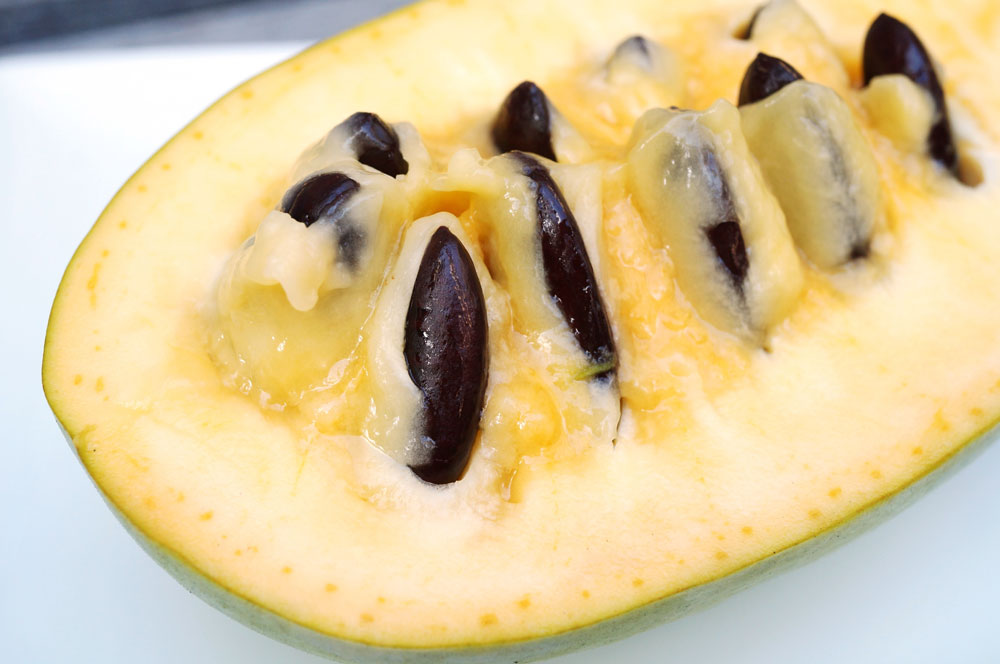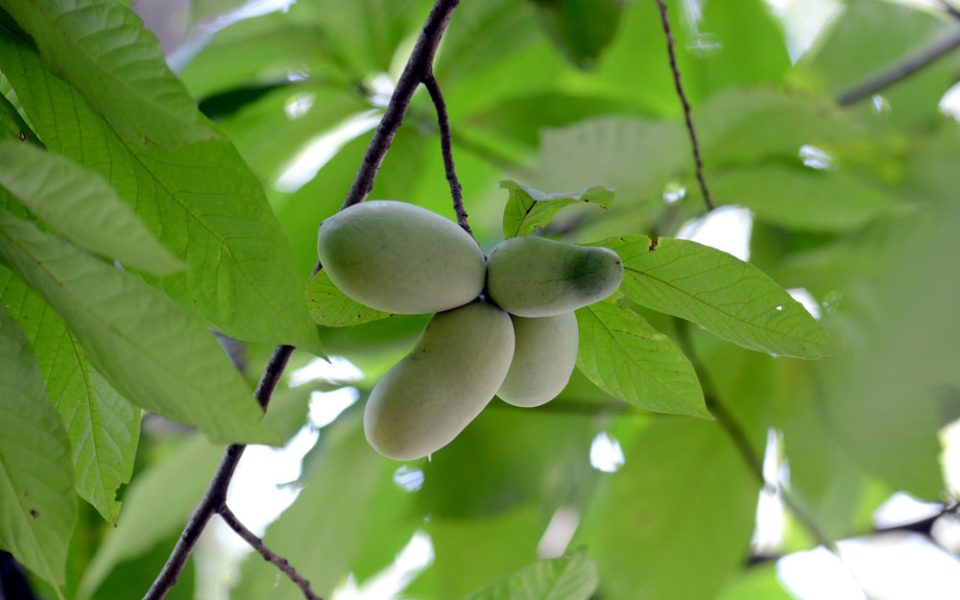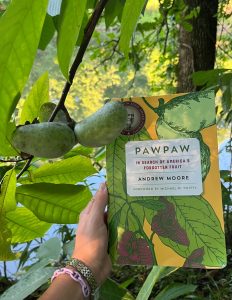Where to Find Pawpaws
You can find the Pawpaw tree in the eastern, southern, and midwestern states of the United States and southern Canada. Imagine an oval line reaching from Nebraska to southern Ontario, around New York and down to Florida, over to East Texas and back up to Nebraska; you have just circled the regions where the Pawpaw tree can be found.
You can find Pawpaw trees in low-lying areas close to creeks and streams. They grow in well-drained areas and flourish in full sun or partial shade. Young Pawpaw trees seem to grow well in partial shade and can provide excellent cover for wildlife. They grow in clusters or colonies. Where you find one, you will find many more.
What is a Pawpaw Tree?
The Pawpaw is the largest fruit tree native to the United States and can grow to 35 feet. It is also the only member of the tropical Annonaceous family found here.
The Pawpaw tree’s leaves are long, thin and flat. The flower is a maroon blossom that appears in April and May. It is a small maroon and purple bell-shaped blossom about an inch across. It has a slight odor, similar to that of rotten meat. The odor attracts blowflies, beetles and other insects that aid in pollination.
On average, the fruit of the Pawpaw is the size of your fist and resembles a pear. It is green and, after it falls, it turns yellow and eventually black spots will appear. You will notice the fruit ripens in mid-August and September. The fruit on the ground often attracts ants as it ripens. The fruit does have seeds, much like that of the persimmon.

Since the Pawpaw fruit on the ground is so sweet, it quickly attracts insects. When you shake the tree, green fruit will stay attached to the tree, and ripe fruit will fall and be void of ants for a time. The fruit is best to eat when it is mushy. If you squeeze it and it’s still hard, it is still green and does not taste good. If you squeeze it and it’s mushy like a mango might be, it will taste great. The taste is much like a combo of mango and banana.
The Pawpaw fruit is a favorite of local wildlife. If you live in bear country, you probably already know that. Wildlife loves the sweet-tasting fruit; they also benefit from the nutrition it provides. It is considered more nutritious than wild grapes, peaches and even apples. It is high in amino acids, vitamins and minerals. Of course, the sweet fruit is also high in calories.
Interesting Pawpaw History
These “hillbilly banana”s have been a favorite of Native Americans for centuries. The Iroquois would mash the Pawpaw into flat cakes and dry them to use later. Often, they soaked the dried cakes in water to make different dressings and condiments.
By shaving off the bark and twisting it, the Cherokee would make ropes and twine. Both the Iroquois and Cherokee enjoyed eating the Pawpaw fruit. Even George Washington enjoyed the Pawpaw fruit. It is said his favorite dessert was chilled Pawpaw. Thomas Jefferson enjoyed the fruit and planted Pawpaw trees around his Monticello home.
Much like Thomas Jefferson, many will plant Pawpaw trees around their home. They are easy to grow and require little maintenance. The Annonaceous acetogenins or natural insecticide of the tree keeps most harmful insects away. It is also used to make a natural insecticide and is useful in the fight against cancer. Universities like the University of Kentucky continue to study the many benefits of the Pawpaw tree.
The Pawpaw Colada
We have a revered fascination with the pawpaw here at Mossy Oak. Down in Mississippi and Tennessee, we often find the native fruit along creeks and in heavily wooded, shady areas. And you’ll just about always find them clumped together in a big patch.
If you’re already familiar with the pawpaw, you’re a lucky soul. Grab a few ripe pawpaws in August or September and make this delicious wild fruit cocktail from renowned wild game chef Michael Hunter. It’s a great way to enjoy your fruit and introduce others to its taste.

Pawpaw Colada Recipe
Ingredients:
1/2 cup of paw paw pulp
2 oz coconut cream
2 oz rum
2 oz spiced rum
1 oz creme de banana
2 oz pineapple juice
2 cups ice
Directions:
Put all ingredients into the blender. Blend for 30 seconds or so and enjoy!
If you’d like your own pawpaw patch on your property, visit Mossy Oak’s Nativ Nurseries for established seedlings ready to ship. Remember, you need at least two for them to produce and it takes 8 years to fruit. Better get started now!
If you like this recipe you can find more from Ingredient Wild.
A Must Read Book on Pawpaws
 Pawpaw: In Search of America’s Forgotten Fruit
Pawpaw: In Search of America’s Forgotten Fruit
Bottomland Book Club Review by Jessi Cole
Those who remember and know America’s largest native fruit seem to be a number less and less with each passing year. The pawpaw, once a vital and integral part in the diet of Native Americans and early American explorers, often quite literally hides in the shadows of oaks and elms, of hickories and flowering dogwoods.
Author Andrew Moore sets out to explore every aspect of the modern and historical pawpaw, from those farmers attempting to create a genetic pawpaw revolution to people across the pawpaw country who pass down the knowledge of wild pawpaw groves from generation to generation.
He travels from Ohio all the way down to Louisiana, stopping to canoe the Mississippi river in search of pawpaws, to attend the largest annual pawpaw festival, to talk to just about every local he comes in contact with about their knowledge of pawpaws, and to spread the word about the delicious fruit every chance he gets.
There’s science and there’s folklore, history and travel. Moore expertly wields the readers’ attention and creates an absolute fascination for the fruit for both pawpaw enthusiasts and newcomers alike. After reading the book, I myself have been obsessed with finding pawpaws in the wild around Tennessee and Mississippi, and I can’t wait until I have my own land where I can plant the trees by the dozens.
Hunters, foragers, farmers, outdoorsmen—this is a book you must read. Native fruits are a wonder to be celebrated, and pawpaws deserve their place in the hearts of all.

Order your copy through your local bookstore!



 Pawpaw: In Search of America’s Forgotten Fruit
Pawpaw: In Search of America’s Forgotten Fruit




